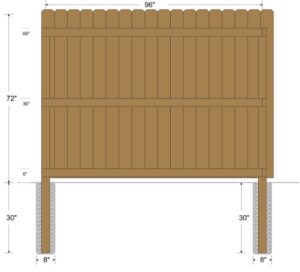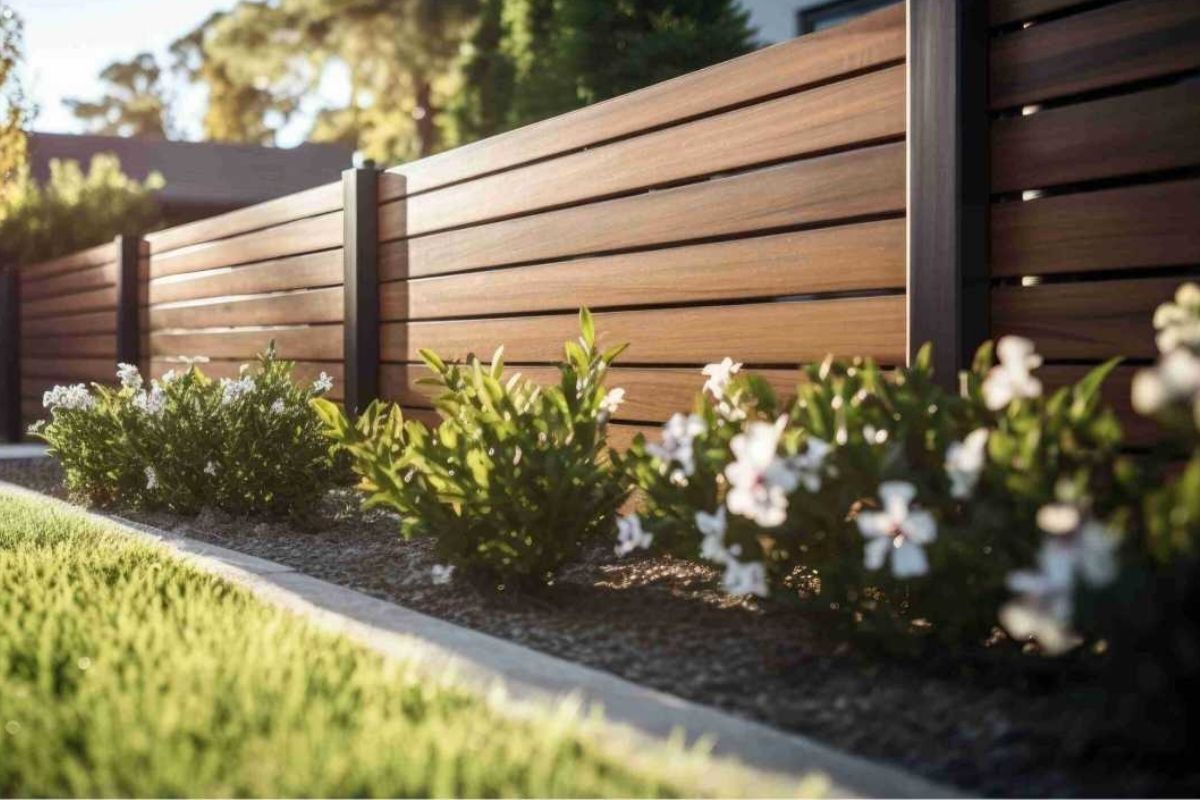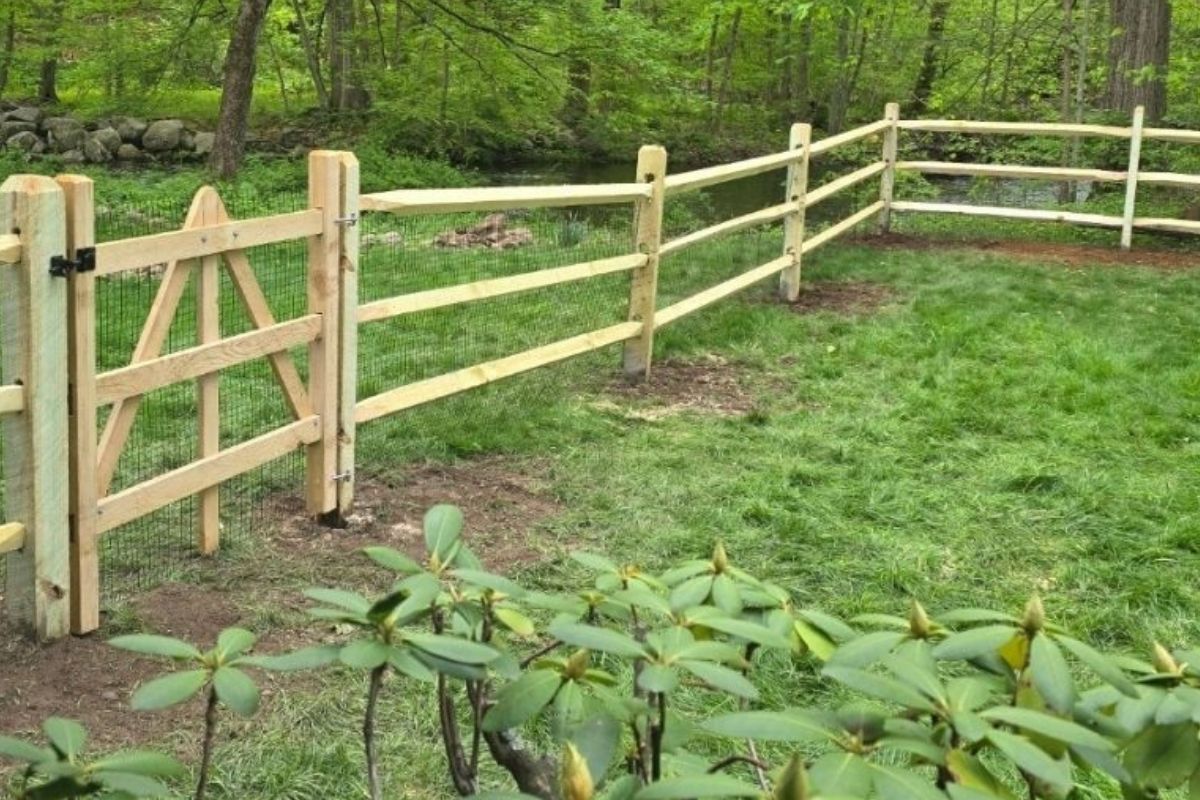A fence is more than just a boundary—it’s an important feature of your property that can complement your home, provide privacy, and boost security. Understanding the different elements that make up a wooden fence can help you make informed choices, ensuring strength, quality, and aesthetic appeal. Here’s a breakdown of the key fence components and their unique benefits:

Posts: The Backbone of Your Fence
Fence posts provide structural support and anchor your fence securely to the ground. Proper installation is critical to ensure durability.
Depth Matters: Posts are set in the ground using industry-standard depths. At Top Rail Fence, we adhere to ASTM standards, which require post holes to be at least half the height of the fence minus six inches, with a minimum of 24 inches. For example:
- A 6-foot fence needs a 30-inch-deep post hole.
- A 5-foot fence needs a 24-inch-deep post hole.
- For regions with frost lines, depths may vary—consult local guidelines.
Material Choices:
- Pressure-Treated Pine (Southeast): Popular for its affordability and resistance to rot, thanks to its durable treatment process.
- Western Red Cedar (West of the Mississippi): Known for its natural beauty, this cedar resists decay and insects.
- Eastern White Cedar (Northeast): A regional favorite with excellent weather resistance, perfect for harsher climates.
- Metal Posts (Southwest & Plains): Commonly used in chain-link fencing, these posts stand out in areas with fewer trees. Look for PostMaster metal posts, a rot-resistant option that combines durability with superior support—ideal for reducing long-term maintenance.
Rails: The Structural Framework
Rails connect the posts and serve as the frame for attaching pickets. Typically made from matching wood species, rails are key to your fence’s stability.
Standard Design:
- Most fences use 2×4 lumber for rails.
- Rails are evenly spaced along the posts to enhance both aesthetics and functionality.
Special Styles:
- For cap-and-trim fences, the top rail is positioned closer to the top of the post, giving your fence a polished, high-end look.
Pickets: The Face of Your Fence
Pickets are the vertical boards that create the fence’s visual appeal and provide privacy.
Specifications:
- Common dimensions include 6 feet in length, 5.5 inches wide, and 5/8-inch thick.
- Materials often match the posts, with popular choices varying regionally.
Placement:
- Pickets are typically installed on the “good side” facing outward, ensuring a clean and polished appearance for neighbors and passersby.
Nails: Secure and Reliable Fasteners
The right nails ensure your fence can withstand the elements and maintain its integrity over time.
Attachment Options:
- Rails to posts require 3.5-inch (16d) galvanized ring-shank nails.
- Pickets to rails use 2-inch (6d) galvanized ring-shank nails to prevent splitting.
Concrete: The Foundation for Stability
Concrete plays a crucial role in keeping posts upright and stable.
Bag Sizes and Usage:
- Concrete bags come in 40, 60, or 80 pounds. An 80-pound bag is perfect for an 8-inch diameter by 30-inch-deep post hole.
Installation Methods:
- Dry Packing:
- Pour dry concrete mix into the hole with the post.
- Pack and compress the mix until it forms a solid base. This method allows for immediate construction on the posts.
- Wet Setting:
- Mix concrete in a wheelbarrow, bucket, or directly in the hole, then allow it to cure. Posts are often set one day, with rails and pickets added the next.
Cap and Trim: Adding a Polished Look
Want to elevate your fence’s design? A cap-and-trim style might be the perfect choice!
Design Details:
- A horizontal board (2×4 or 2×6) is installed on top of the pickets.
- A vertical decorative board (1×4) in front of the pickets hides their edges and creates a refined, elegant finish.
Kickboard (Rotboard): Protect Your Fence’s Base
Kickboards are placed at the bottom of the fence to protect pickets from ground moisture.
Functionality:
- Typically made from 2×6 or 2×12 boards, kickboards shield pickets from rot by preventing water absorption.
- They also add height to the fence, creating a more substantial appearance.
Why Trust Top Rail Fence?
At Top Rail Fence, we combine craftsmanship, quality materials, and industry expertise to deliver fences that stand the test of time. By adhering to ASTM standards and offering tailored solutions based on regional materials and conditions, we ensure every customer gets the perfect fence for their property.
Looking to start your project? Contact our team today for a free consultation, and see why Top Rail Fence is a trusted name in fence building!




